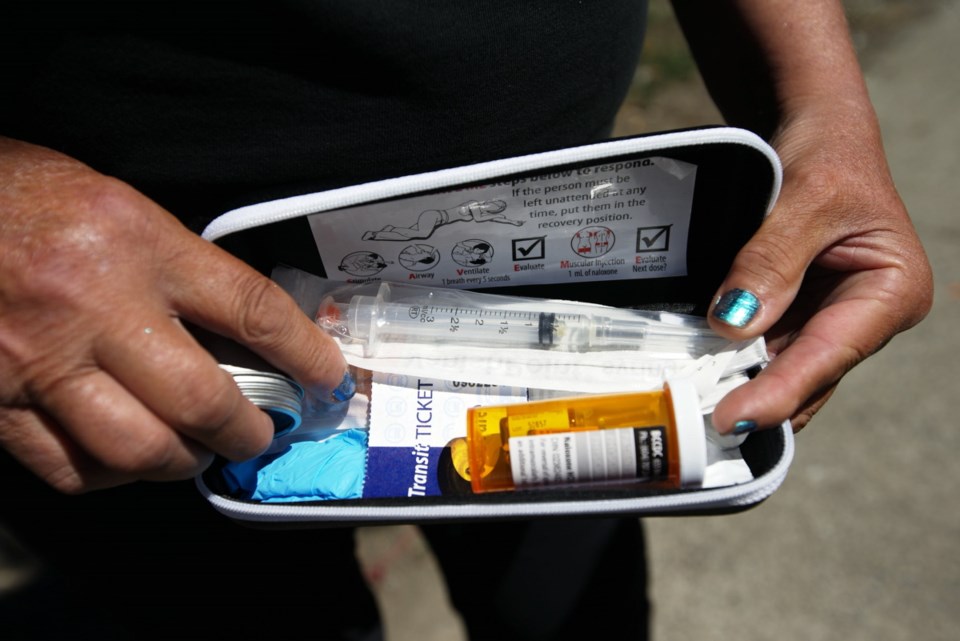In a Dec. 30, 2015, Times Colonist commentary, I wrote: “In these final days of 2015, there have been almost daily fatal overdose deaths in our communities” and that the Times Colonist was reporting how the “drug death tally continues to climb.”
I warned that “public-health messages are not enough. There is a need for public-health services.”
My message was: “Let’s make a resolution that by Christmas 2016, we will have comprehensive harm-reduction services throughout Greater Victoria, including supervised-consumption services.”
Overdose deaths were declared a public-health crisis several months later, with the dire prediction that “without additional steps to combat overdoses, B.C. could see 600 to 800 overdose deaths this year.”
As we now know, this prediction was deadly accurate. Currently in B.C., every six hours a person dies as a result of drug overdose. We remember, grieve and acknowledge the devastating impacts of the past year.
British Columbia is a leader in harm reduction, and Provincial Health Officer Perry Kendall is a champion of harm reduction. So, why has harm reduction been so challenging to implement over this past year?
When the public recognized the crisis, we were still largely incapable of taking action, as societal structures punishing and criminalizing those who use drugs remain unchanged. Registered nurses and doctors faced losing their licences if they initiated the evidence-based responses known to prevent overdose deaths effectively. Public-health authorities made posters telling people not to use alone, but people who openly use drugs face risk of arrest, as well as the risks of being refused services, losing their housing and even losing their children.
We have criminalized, stigmatized and marginalized people who use drugs to such a degree that it took many deaths before we began implementing harm-reduction measures such as overdose prevention sites. People have been doing incredible work and saving lives this year in communities unprepared to respond and often unwilling to support their efforts.
After 400 British Columbians died, the premier announced that a task force would be created to get expert advice on what to do. It wasn’t until the dire prediction of hundreds more deaths became reality that the federal health minister announced the new Canadian drugs and substances strategy needed to “reframe” drug use as “the public-health issue that it is.”
When the health authorities, including Island Health, were told to submit applications to the federal government to establish supervised-consumption services, nothing could happen until they first undertook a community-engagement process with neighbours and an online poll asking people if they were worried about their property values if the health authority established essential lifesaving services.
In the final days of 2016, following a ministerial order, overdose-prevention units are now operating in Victoria. The Society of Living Illicit Drug Users and other first responders are to be commended for providing these emergency responses.
However, overdose-prevention sites are a temporary measure in response to the public-health emergency; they are not intended to be permanent fixtures. The renovated shipping container at Our Place and the other sites are like the gyms and church basements in the wake of a tornado. These services are providing monitoring and support while the storm continues unabated.
One year later and I repeat: Comprehensive harm-reduction services are needed. This crisis has demonstrated that access to safe-injection supplies is not enough, and access to safer-consumption sites will not be enough. Illicit opioids are increasingly toxic and fatal. It is clear that access to safer substances is urgently needed.
We need an end to criminalization and we need rapid access to safe substances through prescription heroin. We need these responses scaled up to be responsive to the needs. We need to change drug policies and end the illegal market. We need to continue challenging the systems that shame, criminalize, stigmatize and kill people who use drugs.
We know that comprehensive harm reduction works. But this crisis shows us larger societal changes are needed. We still have a long way to go.
Bruce Wallace is an assistant professor at University of Victoria’s School of Social Work and a collaborating scientist at the Centre for Addictions Research of B.C.



